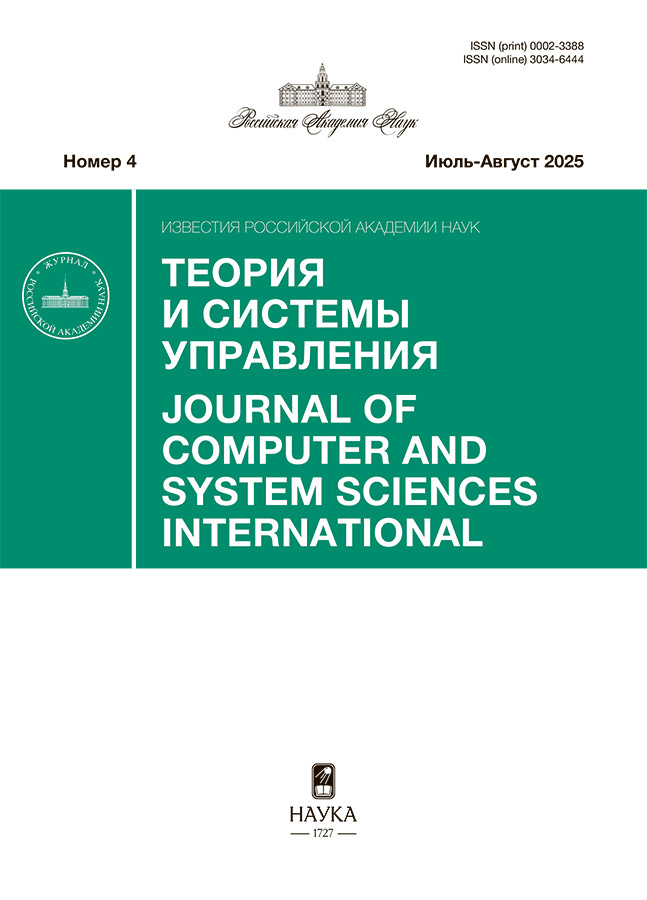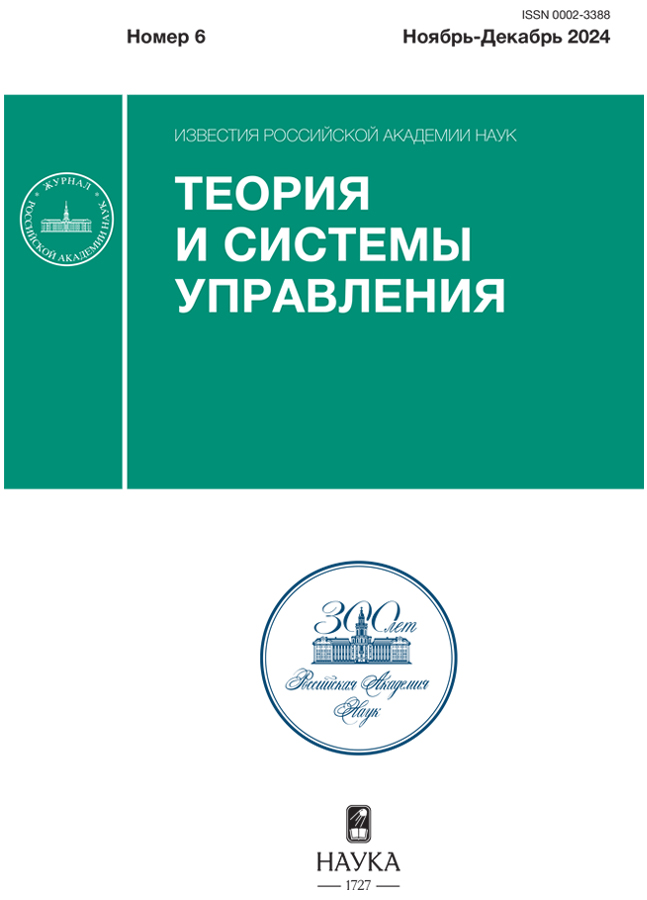Применение бустинга в рекомендательных системах
- Авторы: Жарова М.А.1, Цурков В.И.2
-
Учреждения:
- МФТИ
- ФИЦ ИУ РАН
- Выпуск: № 6 (2024)
- Страницы: 91-110
- Раздел: ИСКУССТВЕННЫЙ ИНТЕЛЛЕКТ
- URL: https://permmedjournal.ru/0002-3388/article/view/683140
- DOI: https://doi.org/10.31857/S0002338824060083
- EDN: https://elibrary.ru/sudevr
- ID: 683140
Цитировать
Полный текст
Аннотация
В современной цифровой эпохе рекомендательные системы прочно укрепились, став важным инструментом для эффективного управления информационными потоками. Их востребованность в значительной степени обусловлена динамикой нынешнего общества, а именно информационным переизбытком и необходимостью персонализации данных. С расширением сфер применения рекомендательных алгоритмов появляется и немало нестандартных случаев, для которых использование классических подходов не столь эффективно. Рассматривается один из таких: малое число объектов при относительно большом числе пользователей в условиях высокой корреляции между некоторыми объектами. Для моделирования предлагается градиентный бустинг — алгоритм машинного обучения на основе ансамбля решающих деревьев.
Ключевые слова
Полный текст
Об авторах
М. А. Жарова
МФТИ
Автор, ответственный за переписку.
Email: zharova.ma@phystech.edu
Россия, Долгопрудный
В. И. Цурков
ФИЦ ИУ РАН
Email: v.tsurkov@frccsc.ru
Россия, Москва
Список литературы
- Cano E., Morisio M. Hybrid Recommender Systems: A Systematic Literature Review // Intelligent Data Analysis. 2017. V. 21. P. 1487–1524.
- Al-bashiri H., Abdulhak M., Romli A., Hujainah F. Collaborative Filtering Recommender System: Overview and Challenges // J. Computational and Theoretical Nanoscience. 2017. V. 23. P. 9045–9049.
- Jahrer M., Toscher A. Collaborative Filtering Ensemble // J. Machine Learning Research. 2012. V. 18. P. 61–74.
- Ahn H., Kang H., Lee J. Selecting a Small Number of Products for Effective User Profiling in Collaborative Filtering // Expert Systems with Applications. 2010. V. 37. P. 3055–3062.
- Zharova M., Tsurkov V. Neural Network Approaches for Recommender Systems // J. Computer and Systems Sciences International. 2024. V. 62. P. 1048–1062.
- Castells P., Moffat A. Offline Recommender System Evaluation: Challenges and New Directions // AI Magazine. 2022. V. 43. P. 225–238.
- Bokde D., Girase S., Mukhopadhyay D. Matrix Factorization Model in Collaborative Filtering Algorithms: A Survey // Procedia Computer Science. 2015. V. 49. P. 136–146.
- Filho T., Song H., Perello-Nieto M. Classifer Calibration: a Survey on How to Assess and Improve Predicted Class Probabilities // Machine Learning. 2023. P. 3211–3260.
- Alzubaidi L., Bai J., Al-Sabaawi A. A Survey on Deep Learning Tools Dealing with Data Scarcity: Definitions, Challenges, Solutions, Tips, and Applications // J. Big Data. 2023. V. 10. № 46.
- Grinsztajn L., Oyallon E., Varoquaux G. Why do Tree-based Models Still Outperform Deep Learning on Tabular Data? // arXiv:2207.08815v1, 2022.
- Alzubaidi L., Zhang J., Humaidi A. Review of Deep Learning: Concepts, CNN Architectures, Challenges, Applications, Future Directions // arXiv:2207.08815v1, 2022.
- Borisov V., Leemann T., Sebler K. Deep Neural Networks and Tabular Data: A Survey // arXiv:2110.01889v3, 2022.
- Bentejac C., Csorgo A., Martinez-Munoz G. A Comparative Analysis of Gradient Boosting Algorithms // Artificial Intelligence Review. 2020. V. 54. P. 1937–1967.
- Sahour H., Gholami V., Torkaman J. Random Forest and Extreme Gradient Boosting Algorithms for Streamflow Modeling Using Vessel Features and Tree-rings // Environmental Earth Sciences. 2021. V. 80. № 747.
- Имплементация модели LightGBM на Python // GitHub. Microsoft LightGBM: webcite https://github.com/microsoft/LightGBM (accessed: 10.07.2024).
- Имплементация модели XGBoost на Python // GitHub. Distributed (Deep) Machine Learning Community XGBoost: webcite https://github.com/dmlc/xgboost (accessed: 10.07.2024).
- Имплементация модели CatBoost на Python // GitHub. CatBoost: webcite https://github.com/catboost/catboost (accessed: 10.07.2024).
- Ke1 G., Meng Q., Finley T. LightGBM: A Highly Efficient Gradient Boosting Decision Tree // Advances in Neural Information Processing Systems. 2017. P. 3146–3154.
- Эксперименты с моделью LightGBM // Kaggle. LightGBM experiments: webcite https://www.kaggle.com/code/prashant111/lightgbm-classifier-in-python (accessed: 10.07.2024).
- Chen T., Guestrin C. XGBoost: A Scalable Tree Boosting System // arXiv:1603.02754v3, 2016.
- Dorogush A., Prokhorenkova L., Gusev G. CatBoost: Unbiased Boosting with Categorical Features // arXiv:1706.09516v5, 2019.
- Pargentn F., Pfisterer F., Thomas J., Bischl D. Regularized Target Encoding Outperforms Traditional Methods in Supervised Machine Learning with High Cardinality Features // Computational Statistics. 2022. V. 37. P. 2671–2692.
- Niculescu-Mizil A., Caruana R. Predicting Good Probabilities with Supervised Learning // Machine Learning, Proc. 22nd Intern. Conf. (ICML). Bonn, Germany, 2005. P. 625–632.
- Guo C., Pleiss G., Sun Y., Weinberger K. On Calibration of Modern Neural Networks // arXiv:1706.04599v2, 2017.
- Barlow R., Bartholomew D., Bremner J., Brunk H. Statistical Inference under Order Restrictions: The Theory and Application of Isotonic Regression // Royal Statistical Society. Series A: General. 1974. V. 137. P. 92–93.
- Zadrozny B., Elkan C. Transforming Classifier Scores into Accurate Multiclass Probability Estimates // The Eighth ACM SIGKDD Intern. Conf. on Knowledge Discovery and Data Mining. Edmonton, 2002.
- Platt J. Probabilistic Outputs for Support Vector Machines and Comparisons to Regularized Likelihood Methods // Advances in Large Margin Classifiers. Cambridge: MIT Press, 2000. P. 61–74.
- Zadrozny B., Elkan C. Transforming Classifier Scores into Accurate Multiclass Probability Estimates // Proc. 8th ACM SIGKDD Intern. Conf. on Knowledge Discovery and Data Mining. N. Y., 2002. P. 694–699.
- Guo C., Pleiss G., Sun Y., Weinberger K. On Calibration of Modern Neural Networks // Machine Learning, Proc. 34th Intern. Conf. (ICML). Sydney, 2017.
- Gupta C., Ramdas A. Distribution-free Calibration Guarantees for Histogram Binning without Sample Splitting // arXiv:2105.04656v2, 2021.
- Naeini M., Cooper G. Binary Classifier Calibration Using an Ensemble of Piecewise Linear Regression Models // Knowledge and Information Systems. 2018. V. 54. P. 151–170.
- Filho T., Song H., Perello-Nieto M. Classifier Calibration: a Survey on How to Assess and Improve Predicted Class Probabilities // Machine Learning. 2023. V. 112. P. 3211–3260.
- Wang H., Liang Q., Hancock J., Khoshgoftaar T. Feature Selection Strategies: a Comparative Analysis of SHAP-value and Importance-based Methods // J. Big Data. 2024. V. 11. № 44.
- Gebreyesus Y., Dalton D., Nixon S., Chiara D., Chinnic M. Machine Learning for Data Center Optimizations: Feature Selection Using Shapley Additive exPlanation (SHAP) // Future Internet. 2023. V. 15. № 88.
- Имплементация библиотеки для подбора гиперпараметров Optuna на Python // GitHub. Optuna: webcite https://github.com/optuna/ optuna (accessed: 20.07.2024).
Дополнительные файлы


























